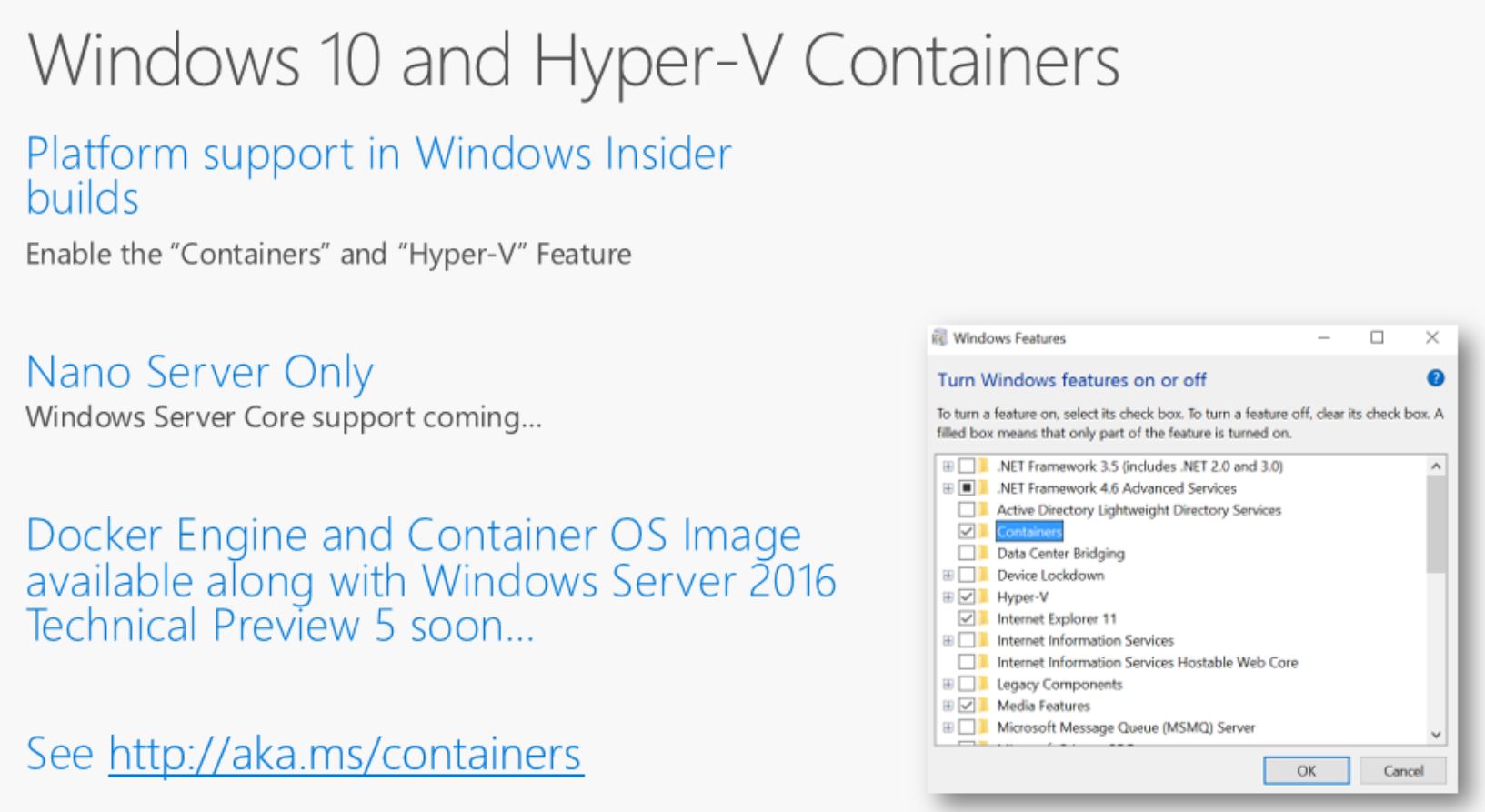Microsoft confirms built-in Hyper-V containers are coming to Windows 10 testers soon

Microsoft is building support for Hyper-V containers into Windows 10 client, company officials publicly acknowledged late last week.

On the last day of its Build 2016 developer conference, Microsoft announced that -- as rumored last year -- container support is coming to Windows 10.
Microsoft officials said the feature will be opt-in in "upcoming flights" of Windows 10 for Windows Insiders. (I've seen a screen shot from one Insider, Daniel Gut, that indicates that container support is already an opt-in option in current Windows 10 Enterprise Insider builds, for what it's worth.)
To get access to containers in the test builds, Insiders will need to enable both the Containers and the Hyper-V features once they're available to Insiders testing Windows 10 Redstone 1, a k a the Windows 10 "Anniversary" update due out this summer.
From Microsoft's April 1 blog post:
Bringing Hyper-V Containers natively into Windows 10 ... "will further empower developers to build amazing cloud applications benefiting from native container capabilities right in Windows. Since Hyper-V Containers utilize their own instance of the Windows kernel, your container is truly a server container all the way down the kernel. Plus, with the flexibility of Windows container runtimes containers built on Windows 10 can be run on Windows Server 2016 as either Windows Server Containers or Hyper-V Containers."
Based on information from a Microsoft presentation at Build last week, these containers will support Nano Server only to start, though Windows Server Core support is still coming.
Nano Server offers Windows Server customers the option of running Windows Server stripped down to its smallest footprint. Nano Server is about 1/20th the size of Windows Server Core, and will consist only of the essential components (Hyper-V, Clustering, Networking, Storage, .Net, Core CLR) -- and no user interface.
Last December, I blogged that Microsoft was working on adding container support to Windows 10 client via "Project Barcelona."
Developers might want to run a container on Windows 10 client in order to avoid the potentially awkward scenario created by running a server virtual machine on their development machine and then running containers inside that virtual machine, officials suggested in last week's blog post. And containers built on Windows 10 can be run on Windows Server 2016 as either Windows Server Containers or Hyper-V Containers, Microsoft execs said.
Speaking of containers, Microsoft also is expected to release very soon -- maybe even this week -- Windows Server 2016 Technical Preview 5, the latest test version of its next version of on-premises Windows Server.
With the upcoming release of Windows Server 2016 Technical Preview 5 the Nano Server container OS image will be made available for download along with an updated Docker engine for Windows. Officials also said last week to expect a new version of PowerShell for Docker to be released soon as open source. This version will replace the existing container module and will build on the Docker Engine's REST interfaces.